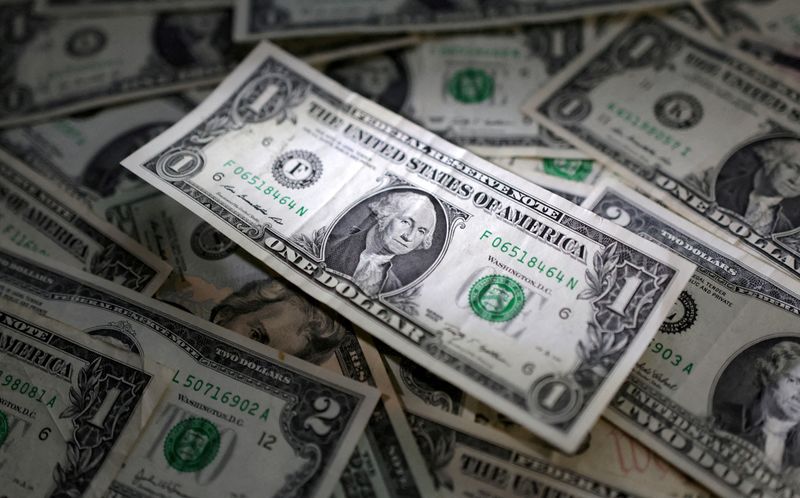By Jamie McGeever
ORLANDO, Florida (Reuters) -Only a return of more aggressive Fed easing speculation or a switch out of relatively expensive U.S. stocks seems likely to wipe the dollar's smile off its face.
Currency markets still appear to be in thrall to the so-called "dollar smile" - the model that posits two extreme scenarios which both tend to boost the dollar.
The theory is essentially this: the dollar rises in good times (relatively strong U.S. growth, "risk-on" markets and high asset returns) and in bad (times of global risk aversion that draw domestic capital home to cash and overseas money to the safety of U.S. Treasuries), but sags in between.
Those "in between" times are often when U.S. interest rates are low or falling, and the domestic economy is muddling along or under-performing relative to its global peers.
Right now, the dollar is being underpinned to varying degrees by both sides of that smile: market turmoil in China, recession in Japan and Britain, and geopolitical tensions around the globe on one; a stubborn Federal Reserve that is in no rush to ease policy ahead of other central banks, and a booming tech-led Wall Street on the other.
Long-forecast dollar declines seem exaggerated and short positioning increasingly under water.
What's more, currency markets are quite relaxed about it - as the dollar climbed to a three-month high against a basket of major rivals this week, implied volatility across major currencies has slid to a two-year low.
So far this year Wall Street is up, Treasury yields are holding firm, and the dollar is proving hard to unseat. Two factors could push the dollar higher still in the near term - investor positioning and rate differentials.
A WOBBLY $8.4 BLN BET
While many of the big investment banks, such as JP Morgan, HSBC and Deutsche Bank, are recommending their clients buy dollars over other currencies, the speculative trading community has yet to fully get on board.
The latest Commodity Futures Trading Commission figures show that hedge funds are still net short of dollars - essentially sellers of the currency - against a range of G10 and key emerging currencies.
Granted, that position has been cut to under $1 billion, the smallest in almost three months. But there is plenty of scope for funds to start going "long", especially against the euro.
Funds have cut their net long euro position to the smallest since October of 2022, but they are still effectively holding an $8.4 billion bet that the single currency will strengthen.
That's a bold call when relative U.S. and euro zone rate expectations are shifting further in the dollar's favor - rates markets are now pricing in around 120 basis points of policy easing from the European Central Bank this year and 100 basis points from the Fed.
"The strong dollar story is not over yet, with the likelihood that the Fed lowers its policy rate gradually, U.S. yields stay relatively high and global growth remains slow," according to Paul Mackel, global head of FX research at HSBC.
EURO PARITY?
Only a few weeks ago, rates markets were pricing in 160 basis points of Fed rate cuts this year starting in March. That equation is now looking like 100 basis points of cuts starting in June.
The dollar has appeared more sensitive to U.S. rates and yields recently than equities, tending to rise and fall with bond yields irrespective of the corresponding moves in stocks.
Whether traders think the Fed's rate-cutting cycle will be shallower than expected for "good" reasons - a growth-driven "soft" or "no-landing" scenario that juices equity prices - or because inflation is uncomfortably hot, the result is the same - a stronger dollar.
Deutsche Bank's Alan Ruskin reckons the dollar's sensitivity to the Fed's first move is such that if the U.S. central bank doesn't cut rates in May, the euro will fall towards $1.05.
His counterparts at JP Morgan agree, and even float the possibility that the euro tests 1-to-1 parity with the dollar in the coming months if the euro zone's economic downturn deepens.

"The 2024 Fed rate cuts will come amid the most synchronized global easing cycle in recent history, leaving U.S. yield spreads elevated. The Fed's dovish pivot by itself is thus not enough to be bearish (on the dollar)," they wrote on Tuesday.
(The opinions expressed here are those of the author, a columnist for Reuters.)
(By Jamie McGeever; Editing by Paul Simao)